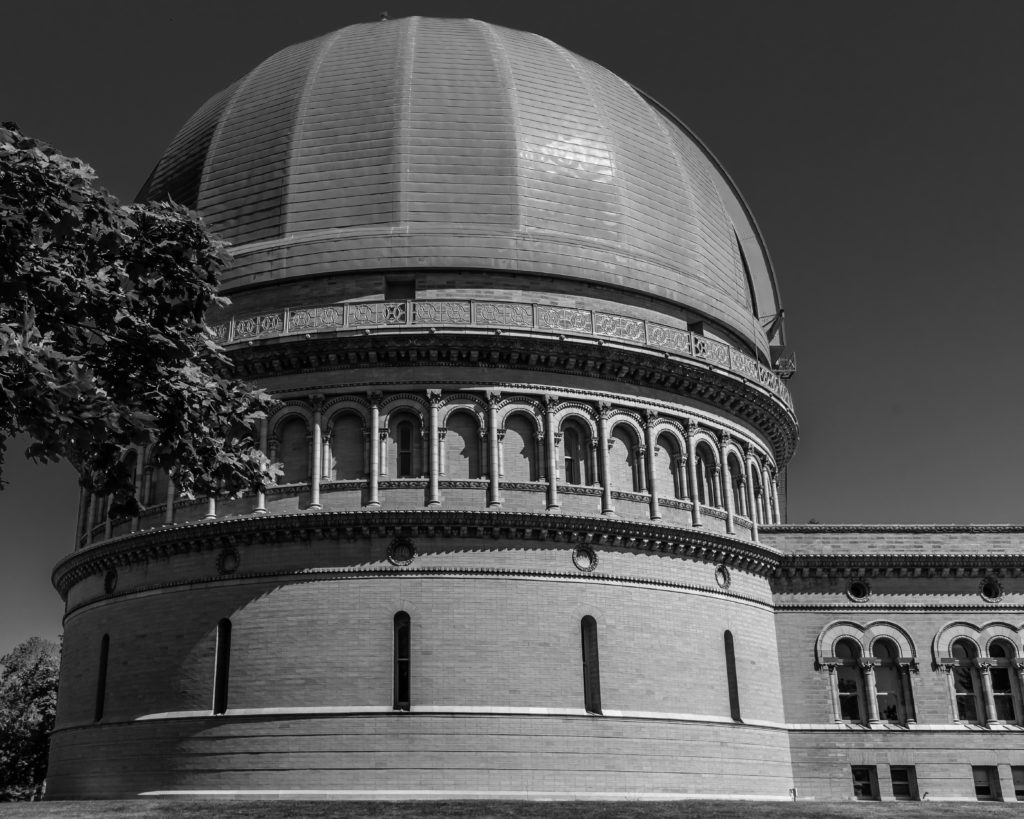
“All things lovely will have an ending”, wrote author Conrad Aiken, and the end is coming soon for the venerable Yerkes Observatory on Lake Geneva in the pleasant resort village of Williams Bay, Wisconsin. The University of Chicago, which operates the observatory, announced earlier this year that Yerkes will close on October 1, 2018, and all public tours and scientific and educational activities will cease after more than 120 years of operations.
Yerkes began its existence as the jewel of American science in the closing years of the 19th century. It was opened in 1897 as part of the newly-minted University of Chicago, a first-class institution founded in 1892 and funded by John D. Rockefeller. The observatory was dedicated on Oct. 21, 1897 with a gala celebration that included university trustees as well visiting astronomers and physicists from around the world. The collection of astronomers at the dedication formed the seed of what is now the American Astronomical Society.
While it was quite a frosty place in winter, Lake Geneva presented the best combination of clear, steady skies and proximity to the University of Chicago. The site selection committee said, “The site is high and beautifully located, the atmosphere is clear, without danger from the encroachment of manufactories, railroads, or electric lights.”

The centerpiece of the observatory was, and remains, a refractor with an immense 40″ objective lens. Astronomer George Ellery Hale conceived the idea of the giant refractor in 1892. Hale by chance overheard the famed lens-maker Alvin Clark declare that two optically perfect 40-inch glass disks were available for polishing into a lens. Hale himself was just hired at the university, and lived just a short distance from the main campus in Hyde Park in south Chicago. Before the lens was finished, the telescope tube and mount were displayed at the world expo in Chicago, although they were nearly destroyed during a fire in late 1893.
The 40″ refractor and observatory buildings were financed by industrialist Charles T. Yerkes, whom Hale enticed with the promise of eternal fame as the namesake of the largest refracting telescope in the world. Private funding was common in this first great age of astronomy, in the late 19th and early 20th century, when legendary businessmen of the day such Rockefeller and Andrew Carnegie dedicated great sums of money for research with few strings attached. Yerkes himself was no visionary, however. He was more concerned with rehabilitating his notorious reputation in Chicago than with advancing science, but his money was a welcome gift to the new university.

To this day, there is still no working telescope with a larger lens than the Yerkes refractor. That’s because a glass lens sags under the force of gravity and loses its carefully configured shape. It’s a limitation of materials, not optical design. The mirrors of reflecting telescopes are fully supported on their back surfaces, so telescope mirrors can be much larger than lenses. Which is why the Yerkes refractor was never the largest telescope in the world in terms of aperture, and why it was soon eclipsed in scientific utility in 1908 by the 60″ reflector at Mt. Wilson Observatory near Los Angeles, and the 100″ at Mt. Wilson in 1917.
Yerkes Observatory was designed from the outset to be more than a home for a big telescope. The observatory is often called the “birthplace of modern astrophysics” because it was the first astronomical observatory to house chemistry and physics laboratories to study astrophysical processes, as well as instrument labs to enhance the capabilities of the telescope. Many famous astronomers passed through the halls of Yerkes including Edwin Hubble, Subrahmanyan Chandrasekhar (winner of the 1983 Nobel Prize for Physics), E. E. Barnard, Otto Struve, Gerhard Kuiper, Gerhard Herzberg (winner of the 1971 Nobel Prize for Chemistry), and Carl Sagan.
The final tours of Yerkes run through the end of September 2018. The buildings are not going to be boarded up or torn down, at least not yet. The University of Chicago wants to allocate its research funds to activities at more modern observatories, but it is trying to find a way to have Yerkes continue as an outreach and education center and a tourist attraction. Let’s hope they succeed.
(Images credit and copyright by Brian Ventrudo).
Share This: